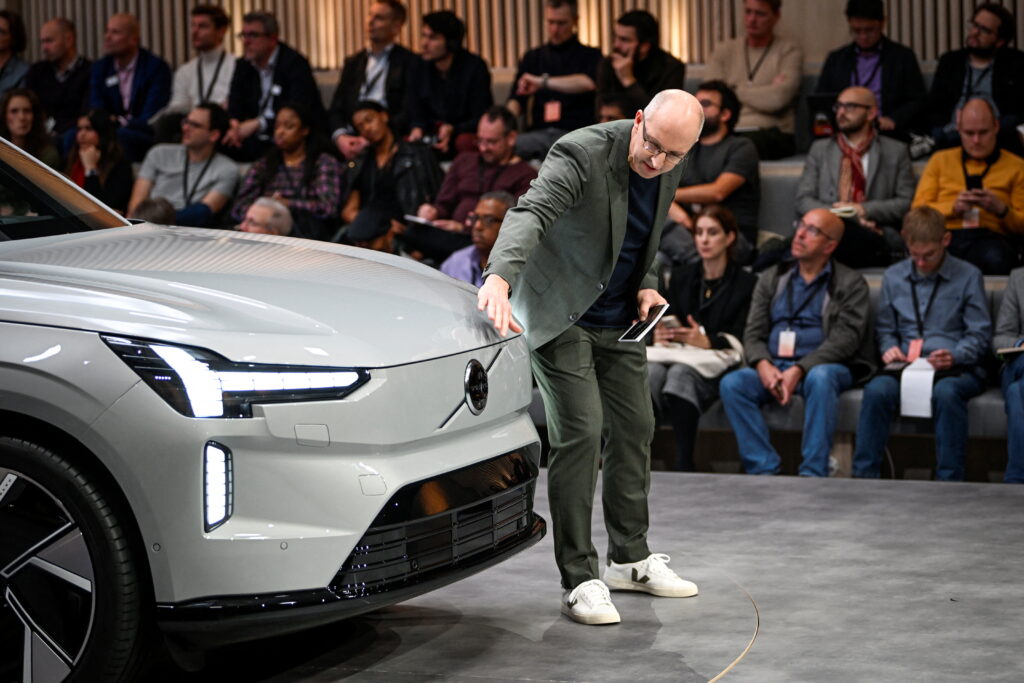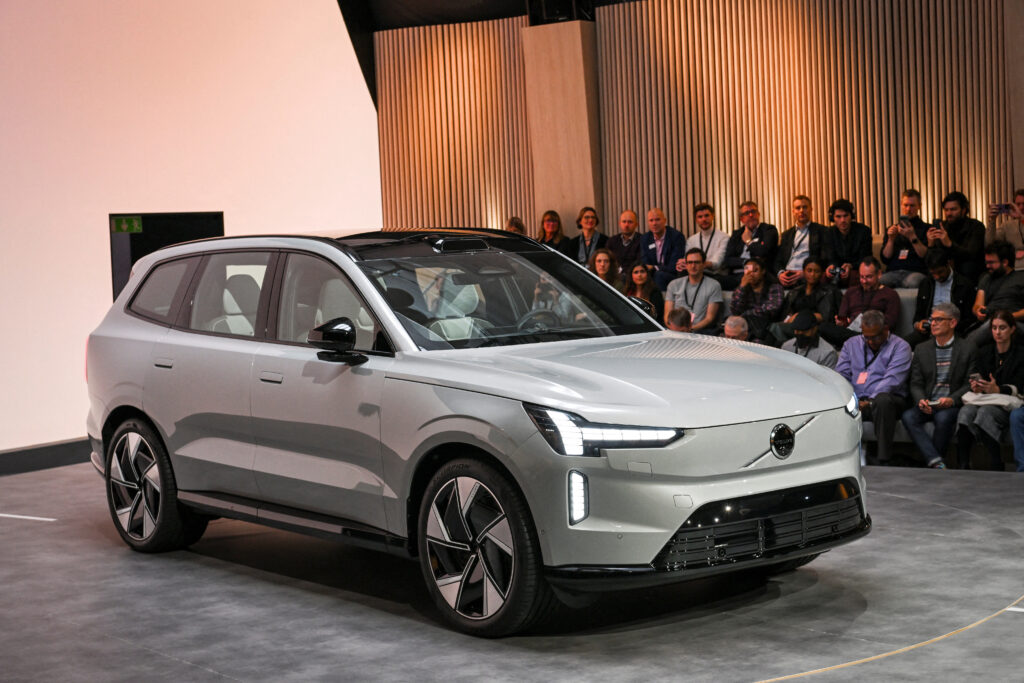

Volvo Cars has committed to only sell fully electric cars by 2030.
This is the most ambitious transformation into electrification from any established car manufacturer and it is a key step for Volvo Cars to reach full climate neutrality across its entire value chain by 2040. In the short-term Volvo Cars is working towards reducing its life cycle carbon footprint per average vehicle by 40 per cent between 2018 and 2025.
This plan, one of the most ambitious in the industry, is validated by the Science Based Target Initiative to be in line with the Paris Agreement1 of 2015, which seeks to limit global temperature rise to 1.5C above pre-industrial levels. Volvo Cars has also committed to communicating improvements from concrete short-term actions in a trustworthy way, including the disclosure of the carbon footprint of all new models.
The Volvo C40 Recharge is Volvo Cars’ second fully electric car, and the first model Volvo Cars launches that is only available as a fully electric version. The carbon footprint shows a great reduction in greenhouse gas emissions compared to that of an internal combustion engine (ICE) vehicle, especially if the car is charged with renewable electricity. The carbon footprint is also lower than that of the XC40 Recharge, mainly thanks to improved aerodynamics.
This report presents the carbon footprint of the new fully electric Volvo C40 Recharge with production start in autumn 2021, in comparisons with the fully electric Volvo XC40 Recharge and Volvo XC40 ICE, both launched in 2020. The carbon footprints for these XC40 models were published in 2020 but are now updated.

The methodology is based on life cycle assessment (LCA) according to ISO LCA standards. Driving distance is assumed to be 200,000 kilometres. In general, assumptions are made in a conservative way in
this study, to not underestimate the impact from uncertain data. Therefore, care should be taken when comparing these results with those from other vehicle manufacturers.
The carbon footprints of C40 Recharge, XC40 Recharge, both charged with EU-28 electricity mix, and XC40 ICE fuelled with petrol containing five per cent ethanol (E5), are approximately 42, 44 and 59 tonnes CO2-equivalents respectively.
The reason for the lower carbon footprint of C40 Recharge compared with XC40 Recharge is mainly because of better aerodynamic properties of the C40 Recharge.
Furthermore, the results assume a constant carbon intensity throughout the vehicle lifetime. The effect
of a more realistic trend of future reduction of carbon intensity in EU-28 electricity mix is tested in a sensitivity analysis and the life cycle carbon footprint is reduced as expected, but not as much as in the case of nearly 100 per cent renewable electricity, such as wind power.


The accumulated emissions from the materials production and refining, Li-ion battery modules and Volvo Cars manufacturing phases of C40 Recharge are nearly 70 per cent higher than for XC40 ICE. However, the use phase emissions for a battery electric vehicle (BEV) per distance driven are lower than for an ICE.
Electrification of cars causes a shift of focus from the use phase to the materials production and refining phase. Volvo Cars has a strategy of working towards reducing the greenhouse gas (GHG) emissions from this phase by 25 per cent per average vehicle from 2018 to 2025 which is an ambitious start towards achieving climate neutrality by 2040. Production of aluminium, the Li-ion battery modules and steel are the main emission contributors. Hence, Volvo Cars is actively striving to reduce carbon footprint of materials and parts e.g., through increase of the degree of recycled content in the materials. Li-ion battery technology is relatively young implying a relatively high potential for improvements. It is hoped that conclusions from this study will provide further guidance on how to prioritise the efforts.

It should be noted that the carbon footprint calculations are performed to represent a globally sourced version of the models. The results of using data for regional sourcing in EU for some materials are tested in a sensitivity analysis and indicate that the effect of more regional data can be significant. Another methodological choice that has a large impact on the result is the choice of allocation method for production scrap. This study accredits the GHG emissions for the scrapped materials to the car, although a lot of the material will be used in other products through materials recycling.
Although this report is relative transparent, it is important for future improvements to have even more transparency and traceability of data from the supply chains and in carbon footprint reports.

Key Findings:
- The C40 Recharge has approximately five per cent lower total carbon footprint than XC40
- Recharge when charged with EU-28 electricity mix in the use phase, which is mainly because of better aerodynamic properties.
- The C40 Recharge has a lower total carbon footprint than the XC40 ICE (E5 petrol) for all the analysed sources of electricity for the use phase.
- Materials production and refining, battery module production and manufacturing at Volvo Cars for a C40 Recharge results in nearly 70per cent higher GHG emissions compared to an XC40 ICE (E5 petrol).
- The highly probable future reduction of carbon intensity of the EU-28 electricity mix will reduce the carbon footprint of C40 Recharge when using this mix for driving. However, a significantly lower carbon footprint is achieved when charging the car with renewable electricity, such as wind power.
- Production of aluminium and the Li-ion battery modules have relative high carbon footprints, with a contribution of approximately 30 per cent each to the total footprint of all materials and components in the C40 Recharge.
- Choice of methodology has a significant impact on the total carbon footprint. Therefore, care should be taken when comparing results from this report with those from other vehicle manufacturers.







Comments